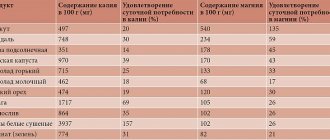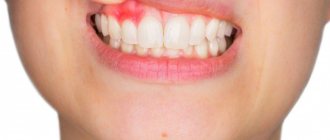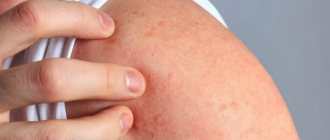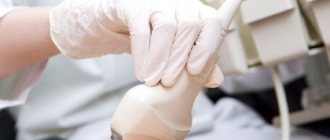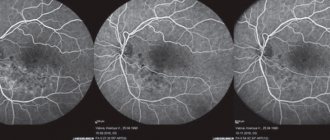Summer has come - a time for active recreation, summer cottages and vegetable gardens. A time of abrasions and wounds, and therefore a high demand for antiseptics. More than 250 trade names of antiseptics in the form of ointments, solutions, sprays and powders are registered in Russia. Let's figure out which drugs are classified as antiseptics in medicine, how they differ from each other, and which of them can be recommended for every home medicine cabinet.
First of all, we note that the pharmacist independently selects the product only for external use, and the choice of antiseptic for the mucous membranes of the nasopharynx, gastrointestinal tract, respiratory and urinary tract, as well as for the genital organs remains with the doctor. We also remind you that many antiseptics cannot be applied to injured skin. Here are two main points to consider when selling and talking to a client. The mechanism of action of antiseptics may be different, depending on the main active ingredient.
Pharmacodynamics and pharmacokinetics
Potassium permanganate - what is it?
Potassium permanganate or potassium permanganate is potassium permanganate. The drug has the form of fine powder (crystals) of red or dark purple color with a metallic sheen. The substance dissolves in water in a ratio of 1:18, a weak aqueous solution is pinkish, a concentrated solution is dark purple.
Pharmacodynamics
Antiseptic . When potassium permanganate (potassium permanganate) comes into contact with organic substances, atomic oxygen is formed.
The oxide that is formed during the reduction of the drug forms complex compounds with proteins - albuminates . Due to this, potassium permanganate in small concentrations has astringent properties, and in concentrated solutions it exhibits a cauterizing, irritating and tanning effect.
Shows deodorizing properties . Effective in treating ulcers and burns.
Potassium permanganate has the ability to neutralize certain poisons, and this property is often used in situations where it is necessary to perform gastric lavage in case of foodborne illnesses and poisoning with unknown substances.
Pharmacokinetics
If ingested, it is absorbed and can cause the development of methemoglobinemia (hematotoxic effect).
Fukortsin
Coloring antiseptic. A combination of fuchsin, boric acid, phenol, acetone, resorcinol and ethanol. Indications for the use of fucorcin are fungal and pustular skin diseases, abrasions, cracks, etc. Apply to the edges of wounds. Has less drying effect than brilliant green and iodine. It is used much less frequently in wound treatment. It is undesirable to use in children due to the boric acid and phenol contained in it, which have a large number of side effects. When applied to the skin, boric acid easily penetrates the blood (especially in children) and enters the internal organs and tissues, accumulating there. Therefore, long-term use can cause intoxication. This property forced us to sharply limit the use of boric acid, especially in childhood. Phenol also has the ability to easily penetrate the skin and lead to intoxication of internal organs.
Indications for use of potassium permanganate: why is potassium permanganate needed?
Aqueous solutions with a concentration of about 0.1% are used as an antiseptic
The product is used for treating burned areas of the body, for washing ulcers and infected wounds, for rinsing the oropharynx and throat in infectious and inflammatory diseases of the oral mucosa and oropharynx (including sore throat phenylamine ( aniline) comes into contact with it ) and eyes if they are damaged by poisonous insects.
As an emetic, potassium permanganate is taken orally for poisoning with alkaloids (for example, aconitine, morphine or nicotine), quinine, phosphorus, hydrocyanic acid. The optimal concentration of potassium permanganate solution for poisoning is 0.02-1%.
A solution for bathing a newborn is prepared with the addition of potassium permanganate.
Is it possible to wash with a solution of Potassium Permanganate?
Douching with potassium permanganate in gynecology is sometimes used for inflammatory processes and thrush .
Men with thrush and a number of urological diseases are recommended to wash with potassium permanganate.
Douching for thrush is carried out with a slightly pink solution (concentration not higher than 0.1%). It should be remembered that a remedy such as potassium permanganate gives a short-term antimicrobial effect (pathogenic flora is destroyed only during the procedure), so it should be used only as an addition to the main treatment.
Crystals of the drug tend not to dissolve immediately. In this regard, in order not to cause a burn to the genital mucosa, the solution for washing/douching is prepared as follows: first, a concentrated (bright crimson) solution is made in a separate container, and then it is gradually poured into boiled water.
Potassium permanganate for diarrhea
An aqueous solution of potassium permanganate is often used in folk medicine to treat diarrhea. For diarrhea , adults usually take the drug orally, while children (including infants) are often given an enema with potassium permanganate.
For diarrhea, several crystals of potassium permanganate are dissolved in a glass of water, and then the resulting solution is poured into another container of water. A single dose for an adult is 200 ml, for a child - 100 ml. In some cases, to stop diarrhea, it is enough to take 1 single dose of the medicine.
Potassium permanganate is a salt of permanganate acid. Its effectiveness against vomiting and diarrhea is due to the high oxidizing ability of the permanganate ion, which provides the antiseptic effect of the product.
Potassium permanganate for hemorrhoids
For hemorrhoids , baths, lotions and washing with potassium permanganate help reduce swelling , burning and pain in the rectal area, thereby significantly alleviating the patient's condition.
To prepare a bath for hemorrhoids , use 1.5 tbsp. Dilute tablespoons of dry potassium permanganate powder in 10 liters of warm water. The indicated proportions are relative.
First of all, it is recommended to focus on the color of the finished solution: the liquid should be soft pink, not bright. A solution that is too concentrated can cause a chemical burn to already inflamed and sensitive skin.
The duration of the procedure is 15 minutes. To achieve a lasting effect, you need to repeat it 2-3 times a day. Treatment is continued until improvement is noticeable.
If it is not possible to make a bath, the same result can be obtained using lotions (applications) with potassium permanganate.
The solution can also be used for regular anal hygiene. Treatment usually lasts about 1 week.
Hydrogen peroxide
Only a 3% solution is used to treat wounds (a higher concentration can cause a chemical burn). It is also used as a hemostatic agent. Hydrogen peroxide is an excellent remedy for primary wound treatment (washing), as it has great cleaning ability - dirt particles and damaged cells are mechanically removed with the resulting foam. You can treat wounds both on the surface of the skin and on the mucous membranes. Hydrogen peroxide is generally not used on healing wounds, as it prolongs the period of complete healing. It is also not used for deep wounds and is not injected into body cavities. When stored in light, it loses its active properties. Open packaging is stored for about a month, closed - 2 years.
Potassium Permanganate: instructions for use (Method and dosage)
According to the instructions for use, the product is applied externally, in the form of aqueous solutions of various concentrations:
- 0.02-1% - for gastric lavage in case of poisoning, douching and washing;
- 0.01-1% - for gargling and mouth;
- 0.1-05% solution - for treating wounds;
- 2-5% - for lubricating burn and ulcer surfaces.
The use of concentrated solutions of potassium permanganate
A five percent solution of potassium permanganate is considered particularly concentrated, so it cannot under any circumstances be used for internal consumption and treatment of mucous membranes: the product is used only in extreme cases and only externally.
Some experts recommend its use to treat fungal skin infections and onychomycosis , but most mycologists prefer to prescribe specific antifungal drugs , which they believe are safer and more effective.
There is also an opinion that a 5% solution is effective against bites of poisonous insects (for example, tarantulas or scorpions) and poisonous snakes. In this case, it is used to wash the affected area, however, such a measure can only be regarded as first aid to the victim, and does not eliminate the need to see a doctor and immediate (if necessary) hospitalization.
In folk medicine, lotions with a concentrated cold (!) solution of potassium permanganate are sometimes used to treat thermal burns . It is also believed that regular treatment of areas of the body that are dangerous from the point of view of the occurrence of bedsores with a strong solution of potassium permanganate helps prevent degenerative or ulcerative-necrotic changes in tissue .
The safety and effectiveness of such treatment, however, should always be discussed with your doctor.
A five percent solution is also used to treat generalized skin lesions , such as pyoderma .
An acne bath with potassium permanganate helps accelerate the drying of the rash elements and the falling off of the crusts. The procedure is repeated daily until the manifestations of the disease disappear. The duration of exposure is no more than 15 minutes. After a bath, it is recommended to rinse your skin with cool water.
The concentrated solution can be used for acne on the back, as well as for cauterization of calluses and warts . In these cases, the product is applied pointwise.
How to dilute potassium permanganate for chickenpox?
For chickenpox , potassium permanganate is diluted so that the solution is not too concentrated. This means that the liquid should be light pink in color.
The dilution rules are as follows: first, a few grains of potassium permanganate are dissolved in about 500 ml of warm water, and then the resulting solution is poured into another container and the volume of water is adjusted to the required volume.
Use a cotton swab replaced in the solution to wipe the rash areas. When the rashes go away, to speed up the drying process of the crusts, you can take baths with a non-concentrated solution of potassium permanganate.
How to make a 5% solution of potassium permanganate?
To prepare a 5% solution, 5 grams of the drug are dissolved in 100 ml of water. To avoid mistakes with the dosage, you must use a kitchen scale.
If there are no scales, when calculating the required amount of potassium permanganate, it is based on the fact that 1 teaspoon contains 6 grams. Thus, to obtain a 5% solution, add this amount of potassium permanganate to 120 ml of water.
If a 3-gram bottle of potassium permanganate was purchased at the pharmacy, potassium permanganate should be combined with 60 ml of water to obtain a solution of the required concentration.
When all the crystals dissolve in water, the finished solution is filtered through gauze folded in several layers.
How to breed potassium permanganate for bathing a newborn?
Because babies' skin is very delicate and sensitive, a light pink, non-concentrated bath solution should be used for bathing.
Recommendations on how to make a weak solution of potassium permanganate are as follows: pour warm water into a transparent glass container and add a small amount of potassium permanganate (at the tip of a knife).
After making sure that all the crystals have dissolved, the solution is poured into another container and water is added to the required volume.
Modern Pharmaceuticals of Russia
Potassium permanganate
APPLICATION
The product is used in medical institutions: for hygienic treatment of the hands of medical personnel, including ambulance personnel, for disinfecting the skin of the injection field, for treating the skin before inserting catheters and puncture of joints, for hygienic treatment of the hands of students of educational institutions, staff children's preschool and school institutions, social security institutions, workers of perfumery and cosmetics enterprises, public catering, municipal facilities, food and chemical-pharmaceutical industries;
for hygienic treatment of hands and injection field by the population in everyday life. PACKAGING
Products are packaged in quantities of 3 g, 5 g, 15 g in glass bottles or glass jars, or in bags made of polyethylene film or laminated paper.
Glass bottles and jars of 3 g, 5 g, 15 g are placed in a box with partitions or grids made of corrugated cardboard.
Plastic bags of 3 g, 5 g, 15 g are placed in boxes with partitions or grids made of corrugated cardboard.
The boxes are covered with a wrapping paper parcel or tape with an adhesive layer.
Labels made of label or writing paper, or self-adhesive labels are glued onto bottles and bags.
| Product | Individual box | Individual label | Group label | G/I size | Number of bottles per g/y |
| Potassium permanganate, 3 g | — | 28×49 | 93×70 | 265x125x160 with grille | 50 |
| Potassium permanganate, 5 g | — | 28×49 | 93×70 | 265x125x160 with grille | 50 |
| Potassium permanganate, 15 g | — | 28×49 | 93×70 | 265x125x160 with grille | 50 |
BARCODES
Individual
| 3 g | 5 g | 15 g |
| 4620008620046 | 4620008620060 | 4620008620084 |
Group
| 3 g | 5 g | 15 g |
| 4620008620053 | 4620008620077 | 4620008620091 |
INSTRUCTIONS (for consumers) on the use of disinfectant
Registration number:
CoGR No. RU.77.99.01.002.E.031064.08.11 dated 08.08.2011
Trade name of the drug:
Potassium permanganate-YuzhPharm
International nonproprietary name:
Potassium permanganate
Form:
Crystalline powder
Compound:
Potassium permanganate content is not 99%
Description:
"Potassium permanganate - YuzhPharm" is dark purple or red-violet crystals or fine crystalline powder with a blue-steel luster.
Group:
Disinfectant.
PROPERTIES:
The product is bactericidal (including against pathogens of nosocomial infections), tuberculocidal, virucidal (including adenoviruses, influenza viruses, parainfluenza and other pathogens of acute respiratory infections, enteroviruses, rotaviruses, polio virus, enteral, parenteral hepatitis viruses, herpes, atypical pneumonia , bird flu, HIV) and fungicidal (against fungi of the genera Candida and Trichophyton) action. According to the parameters of acute toxicity, "Potassium permanganate - YuzhPharm" belongs to the 4th class of low-hazardous substances according to GOST 12.1.007-76 when applied to the skin, introduced into the stomach and inhaled. According to the classification of Sidorov K.K. when administered parenterally, the drug belongs to class 5 of practically non-toxic compounds. Skin-resorptive and sensitizing properties in the recommended modes of use of the product have not been identified. The product has a moderate irritant effect on the mucous membranes of the eyes and skin. Working solutions of the product in the recommended modes of use do not have an irritating effect on the skin and mucous membranes of the eyes. The maximum permissible concentration in the air of the working area of potassium permanganate in terms of MnO2 is 0.3 mg/m3, hazard class 2 (vapors) according to GOST 12.1.005-88.
The product can be used to treat the skin of children from birth.
INDICATIONS FOR USE:
The product "Potassium permanganate - YuzhPharm" is intended for use in medical institutions:
- for hygienic treatment of the hands of medical personnel, including personnel of ambulances;
- for disinfecting the skin of injection sites;
- for treating the skin before inserting catheters and puncturing joints;
- for hygienic treatment of hands of students of general education institutions, staff of preschool and school institutions, social security institutions (nursing homes, hospices, etc.), employees of perfumery and cosmetics enterprises (including hairdressers, beauty salons, etc.), public food, communal facilities, food and chemical-pharmaceutical industries;
- for hygienic treatment of hands and injection field by the population in everyday life.
CONTRAINDICATIONS:
Skin-resorptive and sensitizing properties in the recommended modes of use of the product have not been identified. The product has a moderate irritant effect on the mucous membranes of the eyes and skin. Working solutions of the product in the recommended modes of use do not have an irritating effect on the skin and mucous membranes of the eyes.
MODE OF APPLICATION:
Working solutions of the product are prepared in glass, enameled (without damaging the enamel), plastic containers by adding appropriate amounts of the product to drinking water at room temperature. Hygienic treatment of hands: 3 ml of a 0.005% solution of the product is applied to the hands and rubbed into the skin until dry for 30 seconds. Treatment of the skin before insertion of catheters and puncture of joints: the skin is wiped twice with separate sterile gauze swabs, generously moistened with a 0.05% solution of the product; holding time after completion of treatment – 2 minutes; on the eve of the operation, the patient takes a shower (bath) and changes his underwear. Treatment of the injection field, incl. at the vaccination site: wipe the skin with a sterile cotton swab, generously moistened with a 0.01% solution of the product; the holding time after completion of treatment is 1 minute.
Preparation of working solutions of the product "Potassium permanganate - YuzhPharm"
| Concentration of working solution (by preparation), % | Number of components (in ml) for preparing 100 ml of working solution | Number of components (in ml) for preparing 1 liter of working solution | ||
| Means, g | Water, ml | Means, g | Water, ml | |
| 0,005 | 0,005 | 100 | 0,05 | 1000 |
| 0,01 | 0,01 | 100 | 0,1 | 1000 |
| 0,05 | 0,05 | 100 | 0,5 | 1000 |
SPECIAL INSTRUCTIONS:
Use for external use only. If the product accidentally gets into the stomach, it is recommended to drink several glasses of water with the addition of an adsorbent (for example, 10-15 crushed tablets of activated carbon per glass of water). Do not induce vomiting! If necessary, seek medical help.
RELEASE FORM:
The product is packaged in 3 g, 5 g, 15 g in glass bottles or glass jars, or in bags made of polyethylene film or laminated paper.
STORAGE AND TRANSPORTATION CONDITIONS:
Store in tightly closed manufacturer's packaging at temperatures from 0 ºС to +30 °С in a dry place; away from sources of heat and fire; Avoid storage in direct sunlight. No smoking! Store separately from medications, out of the reach of children. Transportation by land means of transport is allowed in accordance with the rules for the transportation of goods in force for this type of transport, in accordance with GOST 177768. In case of accidental spillage, collect the product in a container for subsequent disposal.
BEST BEFORE DATE:
Shelf life of the product is 5 years in unopened manufacturer’s packaging; The shelf life of working solutions is 28 days.
CONDITIONS FOR DISCHARGE FROM PHARMACIES:
Over the counter. According to the accounting log.
Overdose
Symptoms of overdose are manifested by sharp pain in the oral cavity, along the esophagus and in the abdomen, diarrhea , vomiting. The mucous membrane of the oropharynx swells (possibly laryngeal edema ), changes color to dark brown or purple.
In addition, the victim develops burn shock and mechanical asphyxia; convulsions, motor agitation, phenomena of parkinsonism , nephropathy , hemorrhagic colitis , hepatopathy .
methemoglobinemia may develop with shortness of breath and severe cyanosis .
For a child, a lethal dose is equal to 3 g. For an adult, the lethal dose ranges from 0.3 to 0.5 g/kg.
Treatment: intravenous administration of a 5% solution of Ascorbic acid (30 ml), intramuscular administration of Pyridoxine 5% (3 ml) and Cyanocobalamin (up to 1 g), as well as a 1% solution of methylene blue (50 ml).
Interaction
Potassium permanganate is chemically incompatible with a number of organic substances (including tannin, sugar, coal).
Explodes when treated with concentrated H2SO4 (sulfuric acid).
Even with slight heating (to room temperature) it actively interacts with most reducing agents (for example, glycerin ) and easily oxidized substances. The reaction is accompanied by self-heating, which in some cases causes self-igniting mixtures and can lead to an explosion.
It is very dangerous to grind crystals of potassium permanganate with powders of active metals and non-metals (aluminum, sulfur, calcium, phosphorus, magnesium, etc.), since such actions are often accompanied by an explosion.
Application
- For medical purposes, solutions of 0.01-5% are used for gargling, gastric lavage, douching, treating wounds and burns, and removing tattoos. Antidote for poisoning with morphine, alkaloids, phosphorus, hydrocyanic acid, quinine. To destroy pathogenic microflora during food intoxication. For cleaning eyes after contact with poisonous insects. To neutralize aniline that gets on the skin.
It should be noted that the use of potassium permanganate requires great caution so as not to cause further harm to yourself while trying to cure something. That is why, if possible, you should prefer other medications to it.
- In analytical practice to assess the degree of water purity.
- For O2 synthesis for laboratory needs.
- For cleaning chemical accessories from hard-to-remove organic substances.
- Oxidizing agent in pyrotechnic mixtures.
- For tinting photographs in photography, for tinting ceramics.
- Catalyst for rocket fuel of liquid engines.
- Stain for wooden products.
- In chemical synthesis.
Terms of sale
In Russia, potassium permanganate is included in the IV list of PKKN precursors; in Ukraine, since June 14, 2013, it has also been recognized as a precursor and included in the list of narcotic substances .
In Russian pharmacies, according to the Order of the Ministry of Health and Social Development of the Russian Federation No. 578 of September 13, 2005, “List of Medicines Dispensed Without a Doctor’s Prescription,” which was valid until October 16, 2011, the drug must be dispensed without a prescription, but no more than 2 packages per person.
Recipe in Latin (sample): Rp: Sol. Kalii permanganatis 5% 10 ml DS. For treating wound edges.
Brilliant green solution
Everyone's favorite "green". Available in the form of alcohol solutions and pencils. It has a moderate antiseptic effect and is effective against gram-positive bacteria. Only the edges of the wounds are treated with the solution, without going into damaged tissue. Has a drying effect. It is used until the period when fresh granulation tissue begins to appear in the wound, since long-term use prevents adequate healing of the wound edges. Can be used as a children's antiseptic.
special instructions
Potassium permanganate - what is it?
Wikipedia states that potassium permanganate, which is more often called potassium permanganate in everyday life, is the potassium salt of permanganate acid, a strong inorganic acid, which has the formula HMnO4.
Everyone knows what potassium permanganate looks like - everyone has seen dark purple crystals with a metallic sheen at least once in their life.
Properties and uses of potassium permanganate in medicine
Potassium permanganate is a strong oxidizing agent and, therefore, has a pronounced antiseptic (antimicrobial) effect .
The effects of the product are explained by the fact that in an aqueous solution, in the presence of easily oxidized elements, gaseous oxygen begins to be actively split off from potassium permanganate, which exhibits the properties of a very powerful antiseptic .
In concentrated solutions, potassium permanganate has a pronounced cauterizing and irritating effect.
What can be made from Potassium Permanganate: alternative uses
In addition to medicine, the product is used:
- to determine permanganate oxidation when assessing water quality using the Kubel method;
- for washing laboratory glassware (an alkaline solution of potassium permanganate removes residues of fat and other organic substances well);
- in pyrotechnics (as a strong oxidizing agent);
- for toning photographs (solutions with a potassium permanganate concentration of 3 g/l);
- in space liquid-propellant rocket engines (as a catalyst for the decomposition of hydrogen peroxide);
- for etching wood;
- for removing tattoos (however, this method does not completely remove the tattoo and leaves scars on the body);
- for the production of carboxylic acids from paraffins;
- for bleaching fabrics.
On the Internet you can find a video “Potassium permanganate and gasoline”, in which potassium permanganate is recommended to be added to a car’s gas tank to enrich the fuel with oxygen.
Chemical properties
The formula of potassium permanganate is KMnO4. Molar mass - 158.03 g/mol. The substance has the form of dark purple crystals, does not form crystal hydrates, is characterized by moderate solubility in water (solubility increases with increasing water temperature), does not hydrolyze, and decomposes slowly in solutions.
Strong oxidizing agent during sintering and in solution. Reacts with typical reducing agents (hydrogen, ethanol, etc.). Concentrated solutions have an intense violet color, weak solutions are pink.
The oxidizing ability of the permanganate ion weakens as the acidity of the solution decreases. In an alkaline environment, under the influence of reducing agents, it is reduced to manganate ion; MnO4 in slightly alkaline, neutral and slightly acidic environments transforms into manganese dioxide.
In an acidic environment, the permanganate ion is transformed into an aquacation.
The equivalence factor of potassium permanganate feq(KMnO4) depending on the acidity of the medium is 1/5, ⅓ and 1.
A diluted aqueous solution of potassium permanganate is unstable and decomposes with the formation of a precipitate of manganese dioxide (brown flakes) and the release of oxygen. Decomposition is accelerated by exposure to sunlight.
A solution of potassium permanganate deteriorates especially quickly in the presence of reducing agents.
The acidified solution becomes discolored under the influence of oxalic acid solution. It is also used in titrimetric analysis for the determination of hydrogen peroxide, iron (II) salts, and oxalates.
The hydrocarbon does not discolor the potassium permanganate solution (acidified). Benzene does not discolor a solution of potassium permanganate. Discoloration is caused by passing hydrogen sulfide through an acidified solution of KMnO4.
Ethylene discolors a solution of potassium permanganate when passed through it (as ethylene oxidizes to ethylene glycol).
The oxidation reaction of ethylene with potassium permanganate looks like this:
During this reaction, the purple color of an aqueous solution of potassium permanganate discolors, so it is used as a qualitative reaction for alkenes.
A dilute solution of KMnO4 in a neutral and alkaline environment provokes the oxidation of alkenes to diols (alkene hydroxylation reaction or Wagner reaction).
The oxidation of acetylene with potassium permanganate in a slightly alkaline medium occurs with the formation of potassium oxalate. The reaction of acetylene with KMnO4 is described by the equation: 3C2H2 + 8KMnO4 = 3K2C2O4 + 2H2O + 8MnO2 + 2KOH
In an acidic environment, acetylene is oxidized to carbon dioxide: C2H2 + 2KMnO4 + 3H2SO4 = 2CO2 + 2MnSO4 + 4H2O + K2SO4
The oxidation of aldehydes, which are strong reducing agents, occurs when heated and is described by the formula: 3CH3CHO + 2KMnO4 = CH3COOH + 2CH3COOK + 2MnO2 + H2O
The oxidation of ethyl alcohol with potassium permanganate in the presence of concentrated sulfuric acid and when heated with a low flame begins with the discoloration of the solution. As a result of this reaction, brown flakes of manganese (IV) oxide fall out. If there is an excess of H2SO4, the solution becomes colorless and the smell of acetaldehyde is felt.
Oxidation of 3-nitrotoluene with potassium permanganate in an alkaline medium allows one to obtain o-nitrobenzoic acid.
The decomposition of potassium permanganate when heated is one of the ways to produce oxygen. To do this, pour KMnO4 crystals into a test tube with a gas outlet tube and then heat the test tube.
In this case, the released oxygen will flow through the tube into the flask and gradually fill it (O2 is heavier than air, so it does not leave the flask). If you place a smoldering splinter in a flask, it will burst into flames.
The reaction equation for the decomposition of potassium permanganate looks like this: 2 KMnO4 = K2MnO4 + MnO2 + O2 ↑
Cleaning moonshine with potassium permanganate and soda
The method of purifying moonshine using potassium permanganate, baking soda and alkali (for example, caustic soda) is very popular among moonshiners. Potassium permanganate removes fusel oils, baking soda neutralizes acetic acid, alkali - other harmful impurities.
In the absence of alkali, you can limit yourself to using only potassium permanganate and soda.
Sequencing:
- Potassium permanganate is diluted in water at the rate of 1.5 g per 1 liter of product.
- Soda is diluted in water. To clean 10 liters of moonshine, you need to prepare a solution of 100 g of soda and 100 ml of water.
- First pour the soda solution into the moonshine, stir, and then the potassium permanganate solution.
- Leave for half an hour.
- Dilute caustic soda (or other alkali) with water in equal proportions at the rate of 2 g per 1 liter of moonshine (the alkali is poured with water, and not poured into the water - this is important!).
- The moonshine is covered with a lid and left in a dark place for 12-14 hours, and then filtered through charcoal or cotton wool.
The use of potassium permanganate in gardening
Gardeners and gardeners know about the beneficial properties of potassium permanganate and therefore widely use potassium permanganate for plants.
Use in the garden is advisable when it is necessary to treat the seeds before planting: such treatment allows you to destroy pathogens overwintering on the seeds.
To prepare a solution of the required concentration, dissolve 0.5 g of potassium permanganate in 100 ml of water. The seeds are placed in the resulting liquid for 20 minutes and then dried.
Treating potatoes with potassium permanganate before planting helps protect the tubers from pathogenic fungi and wireworms. A dark pink solution is used to soak the tubers.
To treat onions before planting, use a pink solution. The bulbs are placed in it so that the liquid covers them and left for 8-12 hours.
For processing strawberries in the spring, a product with the following composition is well suited: 1 glass of ash, 1-2 liters of boiling water (the ash is poured with boiling water and allowed to cool), 2 g of potassium permanganate, 2 g of boric acid powder, 1 tbsp. spoon of iodine . The mixture is filtered, poured into a bucket and topped up with water, and used for spraying.
The solution acts both as a fertilizer and as a pest repellent.
A solution of potassium permanganate can be used to spill soil for seedlings, wash boxes, pots and cups before planting greenery or seedlings, and treat greenhouses and greenhouses to prevent plant diseases.
To cultivate soil, for seedlings, and water strawberries and bushes (gooseberries, raspberries, currants) in early spring, use a solution prepared in the proportions of 3 g of potassium permanganate per 10 liters of water. It is especially good to use this product on sandy soils.
However, you should not get carried away with potassium permanganate for cultivating the land and watering flowers - excessive manganese content in the soil can adversely affect the development of plants.
Spraying strawberries with a solution prepared in the proportions of 2 teaspoons of potassium permanganate per 10 liters of water saves strawberries from gray rot. Berries should be processed after flowering.
Is it possible to water seedlings with potassium permanganate? A solution of potassium permanganate is usually used to disinfect soil in boxes and cups adapted for seedlings, as well as in beds. Seedlings in cups should be watered with a warm pink solution once every ten days (alternating with watering with ash lye if desired).
Before planting any seeds in the ground, the soil in the box is watered with a solution, for the preparation of which 3-5 g of potassium permanganate is dissolved in 10 liters of water.
Many gardeners are interested in whether it is possible to water tomatoes with potassium permanganate. Experienced experts say that it is even necessary, since such treatment prevents many plant diseases.
Is it possible to water flowers with potassium permanganate? It is possible, but not too zealously, so as not to cause harm. The benefits of such irrigation with a solution of potassium permanganate are enormous.
First, the plant receives additional manganese and potassium. Secondly, the acidity of the soil increases, which favors the growth of some plants. Thirdly, the soil is disinfected.
The solution for flowers should be pale pink. To prepare it, just drop a few drops of a concentrated solution of potassium permanganate into a glass of water.
How to wash potassium permanganate off your hands?
To wash off the stains left by potassium permanganate from your hands, you can use a slice of lemon, alcohol, or 5-9% vinegar and hydrogen peroxide .
People who advise how to remove potassium permanganate from skin also note the effectiveness of a universal detergent, which is prepared from 100 g of soap (baby or laundry soap, grated on a fine grater), 100 ml of hot water, baking soda (2-3 tablespoons) and 2-3 drops of essential oil.
Potassium permanganate plus sugar: make a fire using improvised means
To start a fire without matches, you need to take a stick, a flat board, potassium permanganate and sugar. Use a stick to rub potassium permanganate and sugar vigorously. As a result of the chemical reaction, the mixture spontaneously ignites.
Precautionary measures
Potassium permanganate should not be dissolved and stored in metal containers, since potassium permanganate will interact with them and lose some of its medicinal properties. It is optimal to use glass containers for preparing aqueous solutions.
If potassium permanganate causes a burn, what should you do?
If the mouth, esophagus and stomach are burned with a concentrated solution of potassium permanganate, the victim’s stomach should be immediately washed, activated carbon and a weak solution of hydrogen peroxide with vinegar should be given (half a glass of peroxide and 1 glass of table vinegar per 2 liters of water).
What does he look like
These are dark purple crystals, so dark that they even appear black. Under no circumstances should they be touched with your hands to avoid getting burned. In addition, brown marks that are difficult to wash off will remain on the skin.
It dissolves well in water, and if the water is warm, dissolution occurs faster.
Even one crystal gives a pink color. The more you dissolve this substance, the richer the color will be - from light pink to dark purple.
What can replace potassium permanganate?
Analogs of potassium permanganate: Ammonia+glycerol+ethanol , Aseptolin , Anmarin , Baktoderm , Vitaon , Dermatolo-tar liniment , Dioxysol , Zelenka , Caleflon , Katapol , Katatcel , Naphthalan ointment , Ethyl alcohol , Protol , Hydrogen peroxide , Tambukan mud , For midron , Formagel , Elekasol , Ethol 96% , Zinc-salicylic paste , Chaga .
During pregnancy
During pregnancy , only external use of potassium permanganate is allowed. Taking potassium permanganate solution orally is contraindicated.
Determining pregnancy using potassium permanganate
This method of determining pregnancy belongs to the “grandmother’s” category, but many pregnant women claim that it is quite accurate.
A small amount of potassium permanganate powder is diluted in 500 liters of warm water (so that the liquid turns pale pink) and a little urine is added to the resulting solution.
If the liquid becomes lighter, there is no pregnancy; if a sediment in the form of flakes has fallen to the bottom of the jar, there is reason to suspect pregnancy.
Reviews
Potassium permanganate is a time-tested antiseptic , which, despite the abundance of other means, is widely used literally from birth. Reviews of potassium permanganate confirm its effectiveness for skin diseases, poisoning, cystitis , sore throat and a number of other diseases.
Some women also use potassium permanganate for unwanted hair. The reviews and photographs that accompany them allow us to conclude that with regular use of a weak solution of potassium permanganate for hair removal, the hairs become thinner and less noticeable over time.
However, there are also less optimistic reviews about hair removal with potassium permanganate - in them, women indicate that it is much safer to resort to professional hair removal with a special device.


